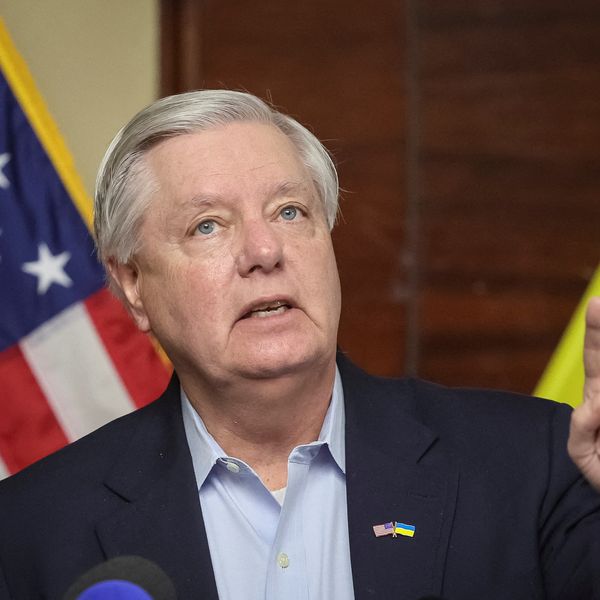The maritime logistics agreement between China and the Solomon Islands has aroused considerable alarm in Washington policy circles. In an echo of the Cold War film “The Russians are Coming,” China‘s agreement with the Solomon Islands evokes images of the Chinese Navy contesting American naval presence throughout the Western Pacific and challenging American territorial security.
The agreement allows the Chinese Navy to use Solomon Islands’ facilities to refuel its ships and to maintain an extended presence in the Western Pacific Ocean. But this is hardly a strategic breakthrough for the Chinese Navy. In 2019, Singapore reached agreement with China to provide logistical support to the Chinese Navy. Given the sophistication of the Singapore facilities and the strategic significance of Singapore’s Changyi naval facility for U.S. operations since the early 2000s, this agreement posed a significant challenge to U.S. competition with the Chinese Navy in the South China Sea. Nonetheless, the agreement has barely aroused the attention of policy makers.
American alarm over the China-Solomons Islands agreement reflects, in part, Washington’s emerging Cold War policy making environment. Policy makers consider every Chinese diplomatic initiative, whether it is an international lending program, a free-trade agreement, or educational cooperation with American universities, as a strategic maneuver that challenges U.S. security and that requires an adversarial response.
But the U.S. response also reflects China’s challenge to America’s Indo-Pacific strategy. Over the past decade, the United States has experienced the end of U.S. hegemony in the South China Sea and the corresponding erosion of every U.S. security partnerships from South Korea to Thailand, with the exception of Japan. No longer confident in its war-time access to its security partners’ naval and air facilities and in its ability wage war against China in maritime East Asia, the U.S. Navy and Air Force have retrenched to the Indian Ocean and the Western Pacific.
Retrenchment is the foundation of the Indo-Pacific strategy and its diplomatic adjunct, the Quad. With the rise of Chinese maritime power, the United States has invested considerable resources to develop enhanced strategic cooperation with Japan, Australian and India, countries that can offer substantial logistical support to U.S. operations on the perimeter of East Asian waters. It has expanded its defense capabilities on Guam, Tinian, and Wake Island. And it is developing access to expanded military facilities in Australia, Papua New Guinea and the Federated States of Micronesia. U.S. encirclement of East Asian waters is America’s strategy to contend with the rise of China in East Asia.
Confident in American naval and air dominance of the Western pacific, the national security community considered the Indo-Pacific Strategy a sure-fire response to the rise of China; the United States could contain China for the long term within East Asia by establishing American military dominance in the surrounding waters.
The China-Solomons Islands agreement punctured American complacence. But China’s interest in developing a naval presence in the Western Pacific should not be a surprise. It was never going to allow America unchallenged maritime hegemony on the perimeter of East Asia. This was especially the case after the United States launched against China a trade war and a technology war, announced its intention to build a coalition of European and Asian countries to resist the rise of China, and significantly altered America’s diplomatic and defense relationship with Taiwan. Once China developed a large and modern navy to contend with the United States in the South China Sea, it would inevitably develop a presence in the Western Pacific.
America’s 2021 agreement with the Federated States of Micronesia to build a base in that country and establish permanent U.S. military presence there presumably spurred recent Chinese interest in reaching the logistics agreement with the Solomon Islands.
America’s response to the China-Solomons Islands agreement has been to threaten retaliation against the Solomon Islands should it allow a permanent Chinese military presence in the country. But over the long term, such threats will not enable the United States to constrain China‘s presence in the Western Pacific. America’s response to the rise of China has relied on military power, but its relative maritime capabilities vis-à-vis China have been in decline for the past decade
More important, China offers economic incentives for cooperation. It has become the go-to power for countries needing assistance in developing highways, railways, seaports and airports, and hydroelectric dams. This is as much the case for countries in the Western Pacific as for countries in Europe, Africa, the Middle East, and Latin America.
China’s formidable and growing military and economic capabilities pose significant challenges to U.S. interests throughout the world, including in the Western Pacific. There is no room for complacency regarding U.S. defense of its security . But an effective response to the China challenge cannot rely on threats of retaliation. The time is long past when the United States could rely on its global dominance to coerce countries to resist cooperation with U.S. adversaries.
To effectively compete with China, the United States must become more competitive. It must ends its costly military interventions throughout Eurasia and the Middle East, reform its military budget, and modernize the U.S. Navy and its shipyards. It must also restore its domestic economic health to enable a more robust global economic presence. Until then, the United States will remain on the defensive in its resistance to China’s growing global presence.















